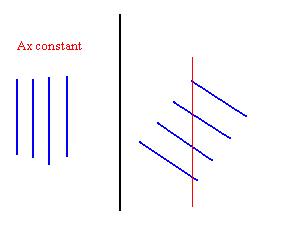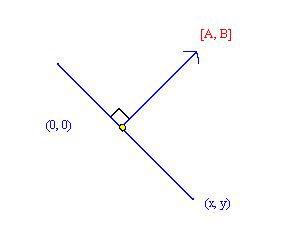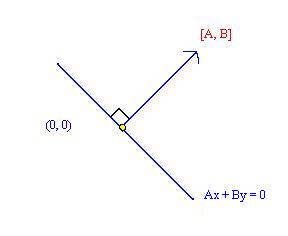
 | c = velocity | l = wavelength = vector between crests | w = time frequency |
 |
In this picture, the level lines are the sloped lines on the right. On the left, these are the level lines if Ax = constant. The equation of the level lines on the right is y = -(A/B)x + constant. |
| Ax + By = 0 [A,B] * [x,y] = 0 [A,B] _|_ [x,y] |

|
| The "curve" Ax + By = 0 is the line through the origin _|_ [A,B] |  |
 |
In this example each line is separated by 1. |
c / sqrt(A² + B²) |
from the line Ax + By = 0, c > 0 if the line is in the direction of [A,B]. |
 |
y = A * cos(ax + by + cz) | l = wavelength vector, perpendicular to the level lines. |
|
l = a multiple of [a,b,c], the signed distance from level 0 to level 2p is equal to:
|
|